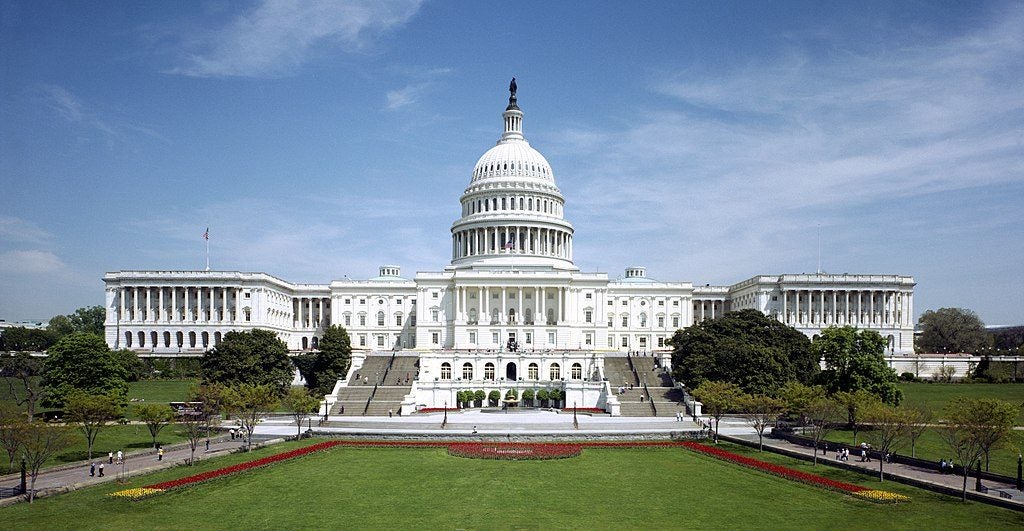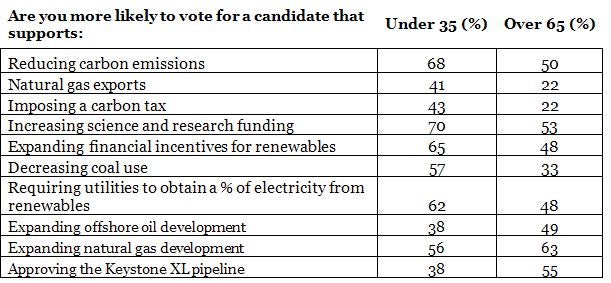 Do you get a sense of déjà vu when you hear the fossil fuel industry arguments against the Environmental Protection Agency’s new climate change plan? You’re not imagining things – we’ve heard these many, many times before.
Do you get a sense of déjà vu when you hear the fossil fuel industry arguments against the Environmental Protection Agency’s new climate change plan? You’re not imagining things – we’ve heard these many, many times before.
The EPA recently held public hearings around the country to solicit comments on its new proposal to put reasonable, nationwide limits on climate pollution from power plants.
The plan is moderate, flexible, and paves the way for considerable economic gains, but the substance hardly mattered for some die-hard opponents: The fossil fuel industry allies trotted out the same talking points about the supposed costs of action and American indifference to clean air policies that they always do.
Tellingly, industry lobbyists and their friends in Congress couldn’t even be bothered to wait and see what the rule said before blasting it with wildly inaccurate claims about the cost of implementation.
Fossil fuel industry allies have clung to these false arguments for decades, so it’s little wonder misinformation continues to swirl around these rules and the clean energy debate at large.
Here are the real facts about five issues opponents raised about the Clean Power Plan:
1. Renewable energy is taking hold.
Opponents of clean air regulations are keen to convince the public that affordable, renewable energy is a pipe dream. But the truth is renewable energy has never been more efficient, it’s never been less expensive, and it’s taking root all over the country.
Take a look at solar power: According to the U.S. Solar Energy Industries Association, the cost of solar power plummeted 60 percent between the first quarter of 2011 and the second quarter of 2013. The long-term picture is just as impressive: In 2012, rooftop solar panels cost about 1 percent of what they did 35 years earlier.
And solar isn’t the only renewable that’s catching on. Wind energy accounted for one-third of new power capacity over the last five years, an amount that could double in the years to come.
Texas, the nation’s top wind producing state, saw wind energy generation grow a whopping 13 percent in 2013. Last year, 60 percent of wind projects in the entire United States were in Texas.
2. Americans support limits on greenhouse gas emissions.
Industry lobbyists often suggest that Americans cringe at any and all attempts to curb the pollution that causes global warming, but that argument is flat-out false. Recent polling shows that’s clearly not the case.
A recent study by Yale found that 64 percent of Americanssupport strict carbon dioxide emission limits on existing power plants.
3. The power plant rules will be efficient and affordable.
As I wrote earlier, the fossil fuel industry and their allies in Congress were eager to say the proposed rules will cost vast sums of money that will trickle down to consumers and destroy jobs in the process. The Washington Post Fact-Checker thoroughly debunked those claims, and it is not the first time industry has been caught red-handed.
Time and again, the cost of implementing any rules related to the Clean Air Act are five to 10 times less than the industry initially estimates they will be.
4. Power companies already have tools to implement pollution limits.
The Clean Power Plan is part of President Obama’s broader plan to reduce nationwide carbon dioxide emissions. He has set as a goal to reduce emissions by 17 percent by 2020 nationwide, using 2005 as the baseline. Industry opponents claim the emission reduction goal is unrealistic, but there’s evidence to the contrary.
Xcel Energy, one of the country’s largest electricity and natural gas providers, has already reduced emissions 20 percent since 2005. The company is on pace to decrease emissions by 31 percent in 2020.
5. States can handle implementation better than you may think.
Yet another common complaint from industry is these meaningful clean air regulations are too big and unwieldy for states to implement. Don’t tell that to California, which last year implemented a world-class climate law that has led to substantive greenhouse gas reductions and economic growth.
And the nine states in the Regional Greenhouse Gas Initiativeare already reaching stellar results.
Industry allies are actually half-right about one thing, though: The Clean Power Plan is indeed a huge deal. It may very well serve as a turning point for the United States and the world in our effort to reduce greenhouse gasses, while pointing the economy toward revitalization through clean energy.
The sooner opponents stop circulating myths to the contrary, the sooner everyone can reap those benefits.
This post originally appeared on our EDF Voices blog.
 The House of Representatives is expected to vote on the Build Back Better Act later this month, a bill with an unprecedented $555 billion in climate and clean air investments that will drive the creation of clean energy and manufacturing jobs. And the economic potential of manufacturing trucks and buses is underscored by two recent EDF reports – one examining the current landscape, and another offering a glimpse of what’s possible in the future.
The House of Representatives is expected to vote on the Build Back Better Act later this month, a bill with an unprecedented $555 billion in climate and clean air investments that will drive the creation of clean energy and manufacturing jobs. And the economic potential of manufacturing trucks and buses is underscored by two recent EDF reports – one examining the current landscape, and another offering a glimpse of what’s possible in the future.









 A day after President Trump did not even utter the words “climate change” in his State of the Union Address, two separate House committees brought climate change back to the legislative forefront for the first time in years. And after such a long hiatus, it was encouraging to see that a clear theme emerged from both hearings– climate change is an urgent threat, but we can address it if we attack it head on.
A day after President Trump did not even utter the words “climate change” in his State of the Union Address, two separate House committees brought climate change back to the legislative forefront for the first time in years. And after such a long hiatus, it was encouraging to see that a clear theme emerged from both hearings– climate change is an urgent threat, but we can address it if we attack it head on.

 Do you get a sense of déjà vu when you hear the fossil fuel industry arguments against the Environmental Protection Agency’s new climate change plan? You’re not imagining things – we’ve heard these many, many times before.
Do you get a sense of déjà vu when you hear the fossil fuel industry arguments against the Environmental Protection Agency’s new climate change plan? You’re not imagining things – we’ve heard these many, many times before.